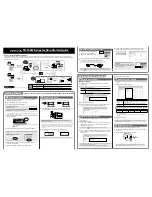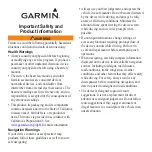
Owner’s Manual | Model A704-5 Aviation Lighting System
36
© 2008 Carmanah Technologies Corporation
Last revised: April 2008
8.0
Model A704-5 Operational Maintenance/Diagnostics
This section describes the procedure for performing routine maintenance checks on the Model A704-5
runway lighting system. Routine maintenance checks will ensure the system is operational and ready in
the event of an emergency.
Once the runway system has been deployed and the operation of the lights has been verified, it is
recommended that airport staff perform the following routine maintenance checks. Carmanah
recommends initially performing these checks daily (or nightly) for the first 10 days, and then two or three
times per week thereafter.
These diagnostics are best performed after dusk when the lights can be seen more easily, but this can
also be done during the day.
Maintenance check procedure:
1. Enter User Mode.
2. Select All Groups.
3. Verify all lights are operational and responsive to radio control commands by sending the TEMP –
LOW – ENTER command from the radio controller. All lights should come on in the Temporary Low
Mode. If it is not obvious, then drive or walk the length of the runway to verify operation.
4. If any lights fail to respond, then repeat Steps 1-3 above. If lights still do not respond, then refer to
section
6.0: Troubleshooting
.
5. Extinguish the lights by pressing STANDBY – ENTER. Verify that all lights turn off. If not, repeat the
command.
6. Perform the battery diagnostic check using the DIAGNOSE feature (see section
5.7.1 Battery
Diagnose Function
). All lights should be in MEDIUM or HIGH state of charge. If any lights show a
LOW or LOW BATTERY state of charge then monitor them daily for several days, limiting the use of
temporary brightness modes during that time. If any light stays in a LOW or LOW BATTERY state of
charge for more than a few days, remove the light and place it outside in Ship Mode to charge for a
few days. An alternative would be to place the light in Ship Mode and connect it to a power source
with the optional AC/DC power adaptor.
7. Perform the radio diagnostic check using the DIAGNOSE feature (see section
5.7.2 Radio Health
Diagnose Function
).
8. Return the lights to the desired operational state.
















































